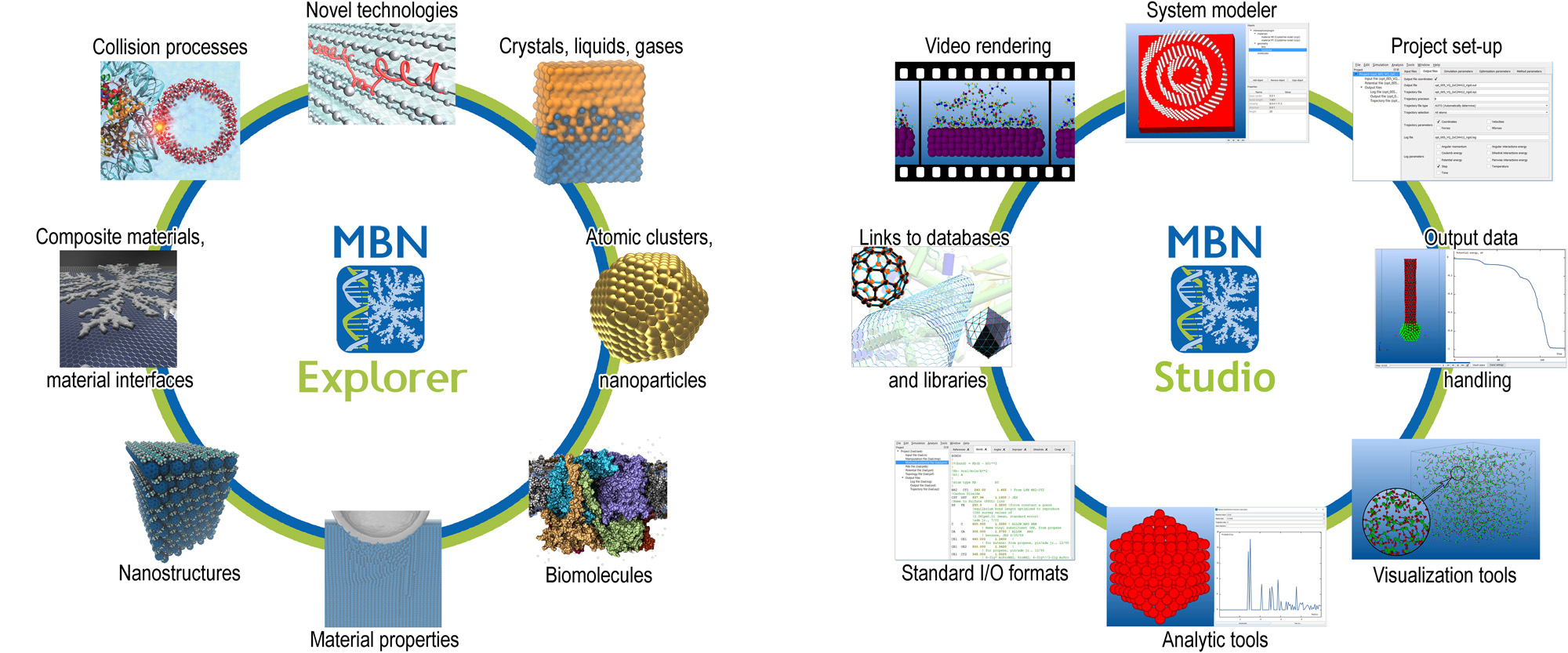March 31, 2017
We are happy to announce the release of MBN Explorer 3.0 and MBN Studio 3.0 that are significantly advanced and improved as compared to the previous versions 2.0. The following new features have been implemented in MBN Explorer 3.0:
- Simulation of chemical reactions in molecular systems;
- Collision induced fragmentation of molecular structures;
- Irradiation driven molecular dynamics;
- Algorithms for molecular deposition simulations;
- Improvements of the module for relativistic particle dynamics;
- Algorithm improvements for calculation of photon emission spectra by charged particles;
- Algorithms for simulations and analysis of ion beam induced transformations of molecular media
- Dynamical output of molecular topology;
- Optimization of the reactive CHARMM force field;
- Particle-Mesh-Ewald (PME) and antirotator calculation speedup and scalability improvements;
- Tabulated Embedded-Atom Model (EAM) potential for compatibility with LAMMPS;
- Ziegler-Biersack-Littmark interaction potential;
- Soft Coulomb potential implementation;
- Bug fixes in kinetic Monte Carlo algorithm and memory leaks resolution;
- Small bug fixes;
- Enhanced compatibility with MBN Studio;
- Improved MPI parallelization of the core algorithms;
- Updated MBN Explorer User's Guide;
- Enriched library of MBN Explorer project examples;
- Updated book of MBN Explorer tutorials;
- Springer monograph (available since May 2017) on case studies of various MBN systems with MBN Explorer
MBN Explorer 3.0 and MBN Studio 3.0 are equipped with the complete User’s guide and a comprehensive database with examples of simulated molecular systems that are available for all licensed users of the software. MBN Explorer 3.0 and MBN Studio 3.0 can be accessed through different type of license agreements, including the one for a 1-month free trial version and the educational license.

More information about MBN Explorer 3.0 and MBN Studio 3.0, the type of licenses, and how to get access to the software, can be found here and here.